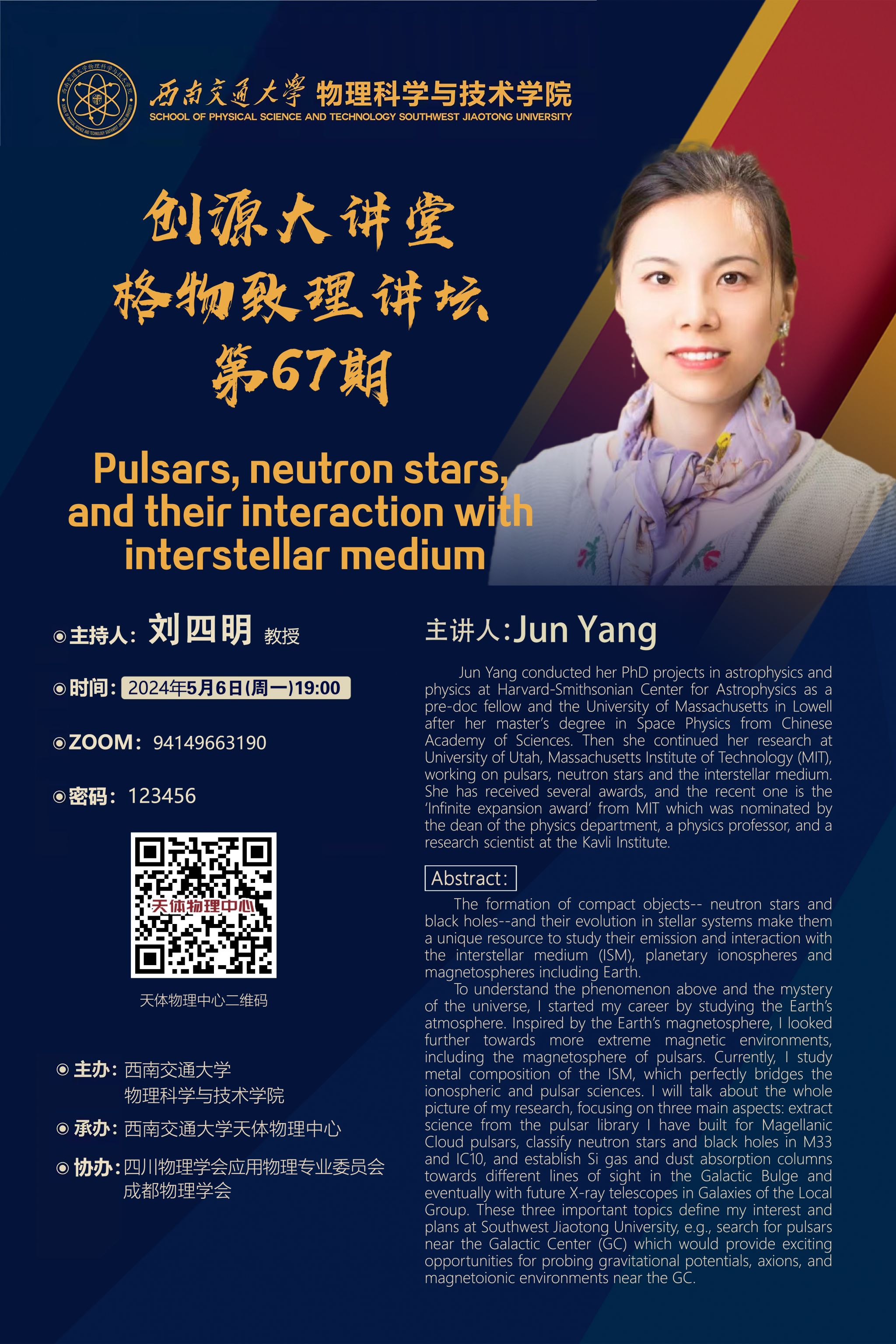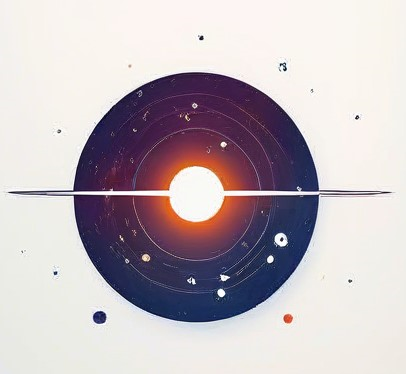主持人:刘四明教授
时间:2024年5月6日(周一)19:00
ZOOM:94149663190
密码:123456
Title: Pulsars, neutron stars, and their interaction with interstellar medium
主讲人:Jun Yang
Jun Yang conducted her PhD projects in astrophysics and physics at Harvard-Smithsonian Center for Astrophysics as a pre-doc fellow and the University of Massachusetts in Lowell after her master’s degree in Space Physics from Chinese Academy of Sciences. Then she continued her research at University of Utah, Massachusetts Institute of Technology (MIT), working on pulsars, neutron stars and the interstellar medium. She has received several awards, and the recent one is the ‘Infinite expansion award’ from MIT which was nominated by the dean of the physics department, a physics professor, and a research scientist at the Kavli Institute.
Abstract:
The formation of compact objects-- neutron stars and black holes--and their evolution in stellar systems make them a unique resource to study their emission and interaction with the interstellar medium (ISM), planetary ionospheres and magnetospheres including Earth.
To understand the phenomenon above and the mystery of the universe, I started my career by studying the Earth’s atmosphere. Inspired by the Earth’s magnetosphere, I looked further towards more extreme magnetic environments, including the magnetosphere of pulsars. Currently, I study metal composition of the ISM, which perfectly bridges the ionospheric and pulsar sciences. I will talk about the whole picture of my research, focusing on three main aspects: extract science from the pulsar library I have built for Magellanic Cloud pulsars, classify neutron stars and black holes in M33 and IC10, and establish Si gas and dust absorption columns towards different lines of sight in the Galactic Bulge and eventually with future X-ray telescopes in Galaxies of the Local Group. These three important topics define my interest and plans at Southwest Jiaotong University, e.g., search for pulsars near the Galactic Center (GC) which would provide exciting opportunities for probing gravitational potentials, axions, and magnetoionic environments near the GC.




